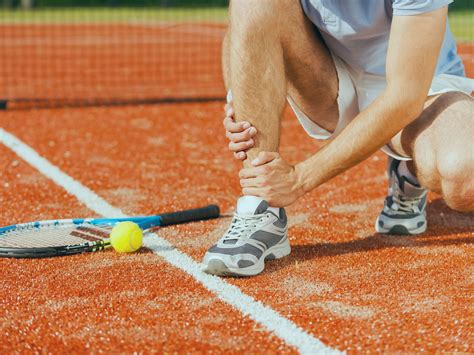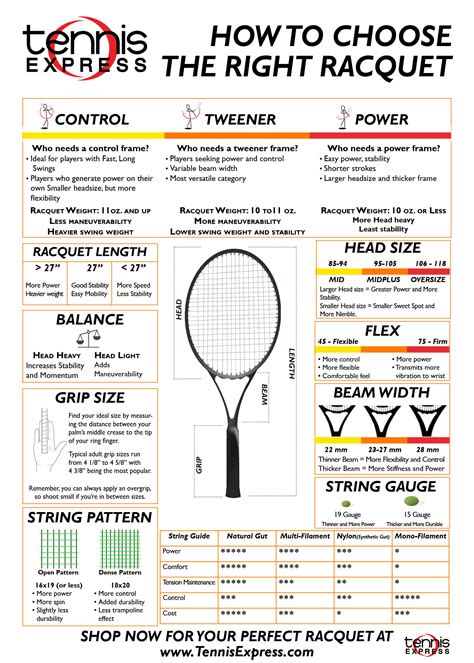Explore common tennis injuries, their causes, symptoms, treatments, and effective warm-up routines to prevent them. Learn best practices for injury prevention in tennis.Tennis is a thrilling sport that combines agility, strategy, and precision, yet it also poses a risk for various injuries that can sideline players at any skill level. Understanding these common injuries and their prevention is crucial for both amateur and professional athletes. In this article, we will explore the most prevalent injuries faced by tennis players, the key factors that contribute to their occurrence, and effective warm-up routines to minimize risk. Additionally, we will delve into symptoms and treatment options for common injuries, along with best practices for sustaining long-term health on the court. Whether you’re a seasoned player or just starting out, equipping yourself with this knowledge can help you enjoy the game while keeping injuries at bay. Let’s dive in!
Understanding The Common Injuries In Tennis Players
In tennis, players often encounter various types of injuries due to the sport’s dynamic nature and the intense physical demands it places on the body. Understanding these common injuries is crucial for effective prevention and treatment. Here are the most frequent types of injuries seen among tennis players:
| Injury | Description | Common Causes |
|---|---|---|
| Tennis Elbow (Lateral Epicondylitis) | Pain and inflammation on the outer part of the elbow. | Overuse of the wrist and forearm muscles, improper racket grip. |
| Rotator Cuff Injuries | Tears or strain in the shoulder’s rotator cuff muscles/tendons. | Repeated overhead motions, poor serving technique. |
| Knee Injuries (e.g., Patellar Tendonitis) | Pain in the knee area, often from overuse and stress. | Improper footwear, high-impact movements. |
| Ankle Sprains | Injury to the ligaments in the ankle, causing pain and swelling. | Twisting movements or landing awkwardly after a jump. |
| Muscle Strains (Hamstrings, Quads, etc.) | Overstretching or tearing of muscles due to sudden movements. | Lack of warm-up, sudden acceleration, or deceleration. |
By recognizing these common injuries, players, coaches, and healthcare professionals can work together to implement proper strategies for prevention and rehabilitation, ensuring that athletes can continue to participate in this exhilarating sport without interruptions.
Key Factors Leading To Common Injuries In Tennis
Tennis, while enjoyable and rewarding, can put players at risk of common injuries due to various factors. Understanding these key elements is crucial for players looking to enhance their performance while minimizing the risk of injury.
One of the primary factors contributing to common injuries in tennis is technique. Proper stroke mechanics are essential for reducing strain on the body. Improper form, particularly during serves and swings, can lead to overuse injuries, particularly in the shoulders and elbows.
Another significant factor is the physical condition of the player. Tennis requires a combination of strength, flexibility, and endurance. Athletes who neglect fitness training may lack the necessary muscle support, leading to injuries. Furthermore, conditioning drills are essential to prepare the body for the demands of the sport.
Environmental conditions can also affect injury rates. Hard courts may provide less shock absorption compared to clay or grass surfaces, increasing the chance of lower limb injuries. Additionally, playing in adverse weather conditions, such as extreme heat or humidity, can lead to dehydration and compromised performance, further heightening the risk of injury.
The equipment used can play a crucial role in sustaining injuries. Players should ensure their racquets are properly sized and strung to avoid unnecessary strain. Shoes should offer adequate support and traction to reduce the risk of slips and falls on the court.
By being aware of these key factors, tennis players can take proactive steps to prevent common injuries and enjoy a safer and more productive experience on the court.
Effective Warm-Up Routines To Prevent Injuries
Warm-up routines are essential for all athletes, especially tennis players, as they help prepare the body for the physical demands of the game. A well-structured warm-up can significantly reduce the risk of common injuries by improving flexibility, increasing blood flow to the muscles, and enhancing coordination. Here are some effective warm-up routines specifically designed to prevent injuries in tennis:
1. Dynamic Stretching
Dynamic stretching involves moving parts of your body through a full range of motion. This type of stretching increases circulation, promotes flexibility, and activates the muscles needed for tennis. Some examples include:
- Arm circles to warm up the shoulders
- Leg swings to loosen the hips
- Torso twists for spinal mobility
2. Footwork Drills
In tennis, agility and footwork are crucial. Incorporate footwork drills as part of your warm-up to enhance agility and coordination. For example:
- Lateral shuffles to improve side-to-side movement
- High knees to engage the core and legs
- Quick steps or short sprints to boost speed
3. Sport-Specific Movements
Performing movements that mimic the actions in tennis will help further prepare your body. Focus on:
- Shadow swings to engage your upper body
- Mock serves and volleys to familiarize your body with the motion
- Cross-court lateral movements to simulate on-court action
4. Gradual Intensity Increase
Start your warm-up at a lower intensity and gradually increase the intensity as your body becomes more prepared. This helps to ease your muscles into action while minimizing the risk of strain.
Incorporating these effective warm-up routines into your pre-match preparation can play a significant role in preventing common injuries associated with tennis. By prioritizing warm-ups, you can enhance your performance on the court and enjoy the game for longer!
Common Injuries: Symptoms And Treatment Options
Tennis is an exhilarating sport, but it can also lead to various common injuries, especially if players aren’t adequately prepared. Here we discuss some of the most frequently occurring injuries among tennis players, along with their symptoms and treatment options.
1. Tennis Elbow
Tennis elbow, or lateral epicondylitis, is characterized by pain on the outer part of the elbow. Symptoms include pain and swelling, which can worsen with the grip of a racket.
- Treatment: Rest, ice therapy, anti-inflammatory medications, and physical therapy can help reduce pain and inflammation. In severe cases, corticosteroid injections may be considered.
2. Rotator Cuff Injuries
These injuries involve strains or tears in the muscles and tendons around the shoulder joint. Players may experience pain, weakness, and reduced range of motion.
- Treatment: Rest, ice, physical therapy, and, in more severe cases, surgery may be necessary to repair the damaged tissue.
3. Ankle Sprains
Ankle sprains occur when the ligaments around the ankle stretch or tear, often due to sudden changes in direction. Symptoms include swelling, bruising, and pain during movement.
- Treatment: R.I.C.E (Rest, Ice, Compression, Elevation) is the first line of treatment, followed by rehabilitation exercises for strength and stability.
4. Achilles Tendinitis
This common injury involves inflammation of the Achilles tendon, resulting in heel pain, stiffness, and swelling at the back of the ankle.
- Treatment: Initial treatment includes rest, ice, and anti-inflammatory medications, followed by stretching and strengthening exercises.
5. Wrist Strains
Wrist strains can occur from overuse or direct impact, leading to pain, swelling, and decreased grip strength.
- Treatment: Ice therapy, rest, and physical therapy can promote recovery. A wrist brace may also be helpful in rehabilitation.
Understanding these common injuries, their symptoms, and effective treatment options is crucial for maintaining a long and healthy tennis career. Always consult with a healthcare professional for personalized advice and treatment plans.
Best Practices For Injury Prevention In Tennis
Preventing common injuries in tennis requires a combination of proper training, technique, and self-care. Here are some best practices to help reduce the risk of injuries:
- Maintain Proper Technique: Work with a coach to ensure your strokes and footwork are performed correctly. Poor form can lead to undue stress on muscles and joints.
- Strength and Conditioning: Incorporate strength training and conditioning workouts into your routine. Focus on building core strength, improving flexibility, and enhancing your overall fitness to support the demands of tennis.
- Hydration and Nutrition: Stay well-hydrated and nourish your body with a balanced diet. Proper nutrition not only fuels your performance but also aids in recovery.
- Regular Stretching: Engage in regular stretching before and after playing. Static and dynamic stretches improve flexibility and can help reduce muscle tightness.
- Use Appropriate Equipment: Choose tennis racquets and footwear that fit your playing style and body. Ensure your gear is suitable for your level to minimize the risk of strain or injury.
- Take Rest Days: Incorporate rest days into your training regimen to allow your body to recover and prevent overuse injuries. Listen to your body and do not push through pain.
- Cross-Training: Participate in other forms of exercise, such as swimming, cycling, or yoga. Cross-training helps improve overall athleticism and reduces the likelihood of repetitive stress injuries related to tennis.
- Stay Aware of Your Limits: Understand your physical limits and respect them. Avoid playing through fatigue, as this is when injuries are most likely to occur.
By adopting these best practices, tennis players can significantly reduce the risk of common injuries and enjoy the game safely and effectively.
Frequently Asked Questions
What are the most common injuries in tennis?
The most common injuries in tennis include tennis elbow, shoulder injuries, ankle sprains, wrist injuries, and knee problems.
What is tennis elbow and how can it be prevented?
Tennis elbow is an overuse injury that affects the tendons in the elbow. It can be prevented by using proper techniques, strengthening forearm muscles, and avoiding repetitive motions.
How do shoulder injuries occur in tennis?
Shoulder injuries in tennis often occur due to the repetitive overhead motions required for serving and smashing. Preventative measures include strengthening shoulder muscles and ensuring proper serving techniques.
What preventive measures can be taken for ankle sprains?
To prevent ankle sprains, players should wear proper footwear, engage in ankle-strengthening exercises, and be mindful of their playing surfaces.
Are there specific warm-up exercises recommended before playing tennis?
Yes, dynamic stretching, light jogging, and sport-specific drills are recommended as part of a warm-up routine to enhance flexibility and reduce injury risk.
What role does hydration play in preventing tennis injuries?
Staying hydrated is crucial for maintaining muscle function and preventing cramps, which can lead to injuries during play. Players should drink water before, during, and after matches.
When should a player seek medical attention for a tennis injury?
Players should seek medical attention if they experience severe pain, swelling, or inability to continue playing after an injury, as early intervention can prevent further damage.









